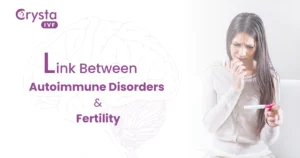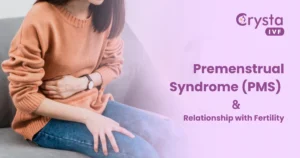Testosterone is an essential hormone for women to operate properly. But nearly every other woman is battling symptoms of low testosterone in this toxic environment and busy lifestyle. So, it’s important to monitor levels of testosterone hormone in females. Sadly, very few are aware of the causes of low testosterone levels in women and the necessary treatments to restore it. But first, let’s define testosterone and discuss why it needs to be balanced before continuing.
Understanding low testosterone levels in women
Testosterone hormone is a type of androgen (sex hormone) that tells your body how to work and what to do. All bodies make testosterone, but male testosterone levels are higher than the testosterone levels in female species. Even though testosterone is a male-dominant hormone, women also need it, even if at a much lower level.
Low testosterone levels in women can happen at any point in their life. Testosterone is produced in women through their ovaries or adrenal glands. Any type of imbalance in them can affect a woman’s overall health and impact the levels of other sex-related hormones.
Also Read: Hormonal Imbalance in Women: Symptoms, Causes and Treatment
Types of Low Testosterone Levels in Women:
- Primary hypogonadism: This is the result of insufficient testosterone production by the ovaries or adrenal glands as a result of aging, genetics, or a variety of medical disorders.
- Secondary Hypogonadism: In this kind, low testosterone is caused by malfunctions in the brain’s pituitary gland or hypothalamus.
Symptoms of low testosterone levels in women:
- Low sex drive
- Low energy & feeling tired
- Loss of muscle tone
- Infertility or trouble conceiving
- Irregular menstrual cycle
- Vaginal dryness
- Depression or anxiety
- Thinning hair

Causes of Low Testosterone Hormone in Female Body:
One factor that affects everyone and is considered normal is the aging process, commonly known as menopause. It is one of the largest causes of low testosterone levels. When women enter menopause, their hormones gradually start getting affected and go beyond half of what they once were.
Another cause is women who had their ovaries removed for various reasons. Due to their ovaries being one major contributor to testosterone, the absence of their presence leads to low testosterone levels.
Some other factors that cause low testosterone levels in women
- Undeveloped Ovaries (Turner syndrome)
- Tumor on your pituitary gland
- Chemotherapy
- Radiation
- Ovarian insufficiency
- Adrenal glands not functioning properly
- Malnutrition (Anorexia)
- Hyperprolactinemia (Too much of prolactin)
- Hypothalamic amenorrhea (Loss of your period due to stress, weight loss, or extreme exercise)
- Premature menopause
Medications that can lower testosterone levels include:
- Hormonal contraceptives
- Corticosteroids
- Antiandrogen medications
- Oral estrogen therapy
- Opioids
Another case of low female testosterone levels may have something to do with their genetic makeup (DNA). It interferes with their body’s ability to produce DHEA and DHEA-S. These are the two compounds that convert to testosterone.
Also Read: What is PCOD: Everything You Need to Know?
Diagnosing Low Testosterone Levels
Diagnosing low testosterone levels begins with a thorough evaluation by your urologist or endocrinologist. A blood test is done to assess hormone levels. However, diagnosing low testosterone can be challenging as its symptoms usually overlap with other diseases, such as depression, thyroid issues, or anemia.
Although a testosterone test for females is possible, the problem arises due to constant changes in their levels throughout the day. Hormone levels change from morning to night and throughout the menstrual cycle in women. For those who are still menstruating, there is a window in the cycle that is considered ideal for blood test accuracy regarding testosterone levels.
Testosterone Levels by Age Chart in Females:
Testosterone levels depend highly on the age factor. Here’s a testosterone level by age chart of females:
| Age | Female (in ng/dl) |
| 12 to 13 years | Less than 7-75 |
| 14 years | Less than 7-75 |
| 15 to 16 years | Less than 7-75 |
| 17 to 18 years | 20-75 |
| 19 years and older | 8-60 |
It starts declining as women enter the age of 30. It is an ongoing process where low levels of testosterone in a woman in her 30s will be different than in a 50-year-old woman.
Management & Treatment of Low Testosterone Count:
There are ways to treat women having low testosterone levels, such as:
- Hormone Replacement Therapy (HRT): Injections, gels, or patches are some ways to increase testosterone levels. After menopause, the sole indication for testosterone therapy in women based on evidence is the treatment of hypoactive sexual desire disorder (HSDD).
- Lifestyle Changes: A healthy diet, regular physical activity, and adequate sleep can aid in maintaining hormonal balance.
- Managing Underlying Conditions: Treating medical conditions like diabetes or PCOS can help improve testosterone levels.
Let’s do a Round-Up
Managing your testosterone levels is essential to maintain your general health and well-being. While a natural decrease in testosterone is normal in women, several other factors can cause levels to drop, resulting in a variety of symptoms.
See a doctor immediately if you exhibit any of the symptoms listed above. Enhance your quality of life with early action like hormone replacement therapy or adopting healthier lifestyle choices.

Conclusion
We at Crysta IVF, leading fertility centre in Noida recognize how crucial hormonal wellness is for both men and women. Our professionals are committed to offering thorough assessment, diagnosis, and personalized treatment plans. Crysta IVF is available to assist you in your quest for a more positive and healthy version of yourself, regardless of whether you’re dealing with low testosterone or other fertility issues.
FAQs
How to increase testosterone in female naturally?
The most important factor is to eat well. Certain foods help boost testosterone levels, such as:
- Organic, free-range eggs are high in protein, vitamin B6, and omega-3 fatty acids. It is generally safe for most people to consume one egg per day.
- Aim for one handful of almonds and sprinkle a handful of pumpkin seeds on porridge, salads, and soups daily. Both are high in zinc, magnesium, and protein.
- Leafy greens, high in iron, magnesium, and vitamin B6 (such as spinach and kale), are consumed every day
- Try to eat two or three servings of wild, oily fish per week, such as salmon and mackerel, which are high in protein and omega-3 fatty acids.
- Lentils are a rich source of protein for vegetarians; beans, especially black, kidney, or pinto beans, are high in zinc, B vitamins, and protein.
How to treat low testosterone in females?
As mentioned above, Hormone Replacement Therapy (HRT), healthy diet, exercise, adequate sleep, and managing underlying conditions can help treat low testosterone levels in women.




